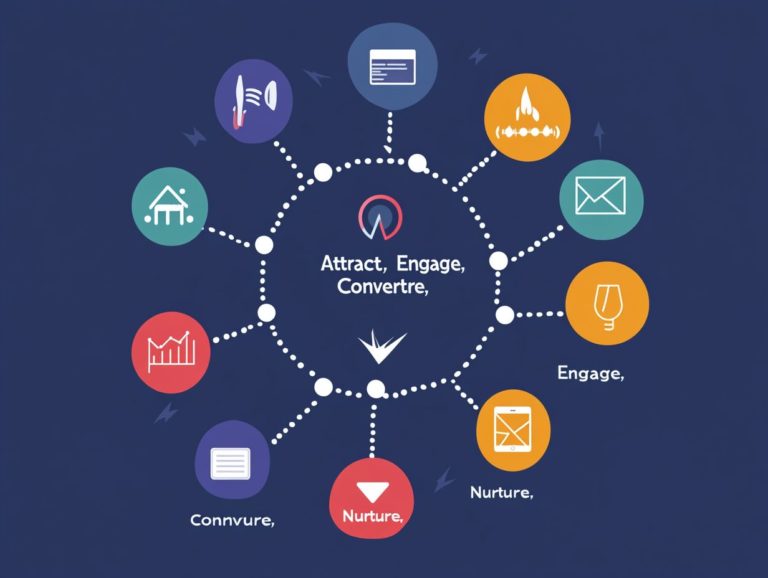What is the Customer Journey in Lead Generation?
Let's Set Up Your Lead Generation Strategy
Fill out the form below, and our team will get in touch with you to create a tailored solution for your business.
Understanding the customer journey is essential for effective lead generation, guiding potential buyers from their first moment of awareness to their ultimate decision-making.
This article delves into the intricacies of the customer journey, emphasizing its importance for businesses while breaking down its key stages: Awareness, Interest, Consideration, Decision, and Retention.
You’ll uncover best practices for navigating each stage seamlessly, empowering you with strategies to enhance your lead generation efforts and drive growth.
Jump in and learn how to supercharge your strategy!
Contents
- Key Takeaways:
- Understanding the Customer Journey
- The Importance of Lead Generation
- Let's Set Up Your Lead Generation Strategy
- Stages of the Customer Journey in Lead Generation
- Let's Set Up Your Lead Generation Strategy
- Best Practices for Navigating the Customer Journey
- Let's Set Up Your Lead Generation Strategy
- Frequently Asked Questions
- What is the Customer Journey in Lead Generation?
- What are the stages of the Customer Journey in Lead Generation?
- How can businesses improve the Customer Journey in Lead Generation?
- What role does content play in the Customer Journey in Lead Generation?
- Why is it important to track the Customer Journey in Lead Generation?
- How can businesses measure the success of their Customer Journey in Lead Generation using Shapley values?
Key Takeaways:
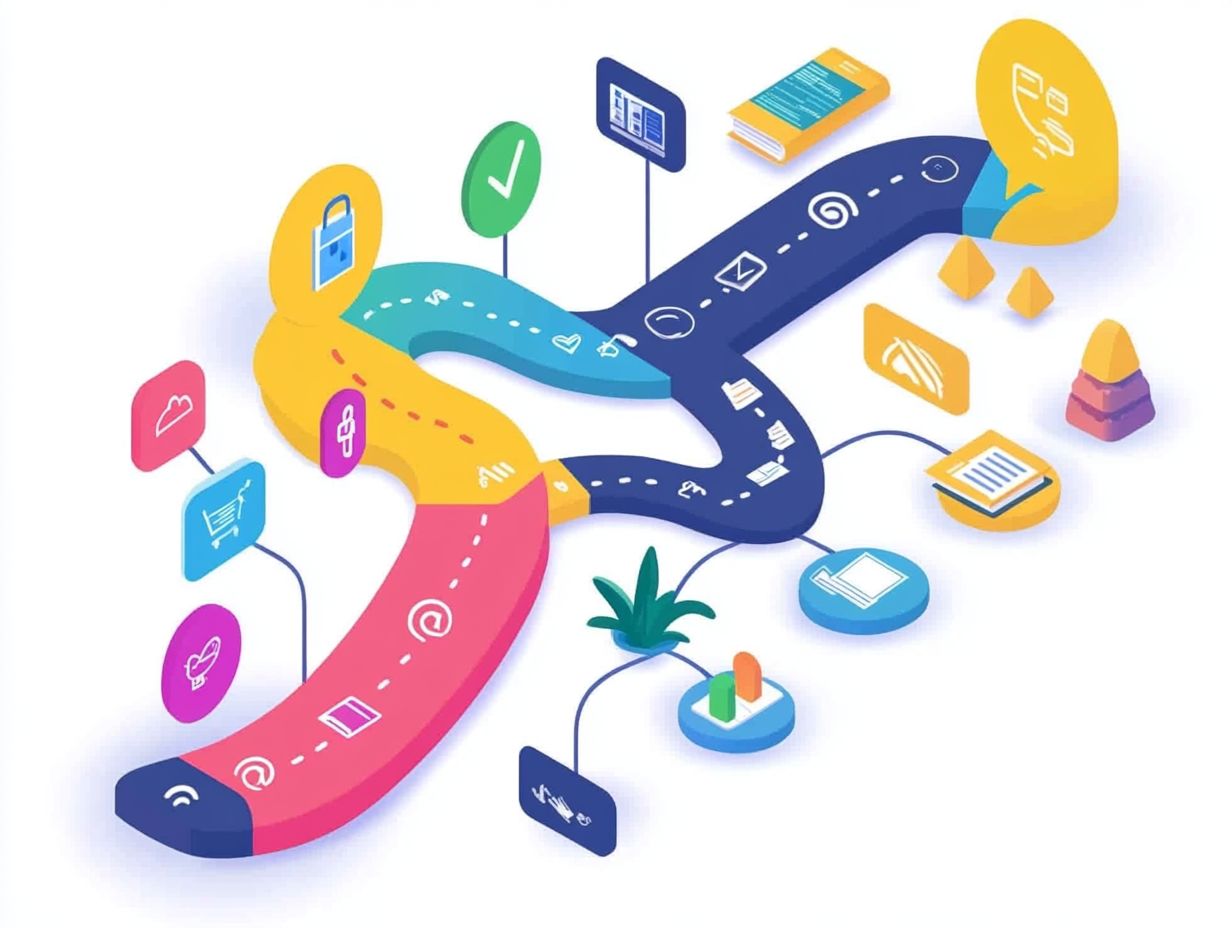
- Lead generation is the process of attracting potential customers and guiding them through a series of stages towards a purchase decision.
- Understanding the customer journey is crucial for businesses as it allows them to tailor their strategies to meet the needs and preferences of their target audience.
- To successfully navigate the customer journey, businesses should focus on creating awareness, building interest, encouraging consideration, promoting decision-making, and fostering retention and referral.
Understanding the Customer Journey
Ready to unlock the secrets of your customers’ decisions? Grasping the nuances of the customer journey is essential for you if you’re aiming to elevate your customer experience and achieve superior lead generation results.
By carefully mapping the stages that potential leads traverse, you can pinpoint and address customer expectations, pain points, and engagement strategies that truly resonate with distinct audience segments.
Leveraging a customer data platform like Treasure Data can refine this process, enabling you to attract new customers and cultivate lasting relationships with them effectively.
Defining the Concept
The customer journey is the path you traverse from the moment you become aware of a brand to the time you make a purchase—and beyond.
This journey typically unfolds in several stages: awareness, consideration, decision, and post-purchase. In the awareness stage, you familiarize yourself with a brand’s offerings, often influenced by marketing efforts, word-of-mouth, or online searches.
As you transition into the consideration phase, you evaluate various options, seeking information that aligns with your specific needs. The decision stage is where you finally make that purchase, followed by the post-purchase experience, which can greatly impact your future loyalty to the brand.
Understanding customer personas—detailed profiles representing different segments of your audience—can be incredibly beneficial in tailoring the journey to meet those specific needs.
By gathering insights through surveys and feedback, brands can refine their strategies, ensuring they not only meet your expectations but also exceed them at every stage of your journey.
The Importance of Lead Generation
Lead generation stands as a cornerstone of effective marketing strategies, acting as the vital gateway for transforming potential leads into devoted customers, ultimately propelling your sales forward.
A well-crafted lead generation strategy not only fosters brand loyalty but also guarantees elevated levels of customer satisfaction through carefully targeted engagement metrics.
Let's Set Up Your Lead Generation Strategy
Fill out the form below, and our team will get in touch with you to create a tailored solution for your business.
Why is it Essential for Businesses?
Lead generation is vital for your business, as it serves as the cornerstone for effective marketing strategies, allowing you to reach and nurture potential leads through a variety of channels.
By leveraging the capabilities of engaging email marketing campaigns, you can captivate your audience. The expansive reach of social media platforms offers additional opportunities to connect.
Search marketing is equally important, enabling you to engage with potential customers who are actively searching for your products or services.
A robust customer data platform becomes essential for you, helping to track these leads, gather insights on their interactions, and analyze their behaviors.
Understanding how different interactions lead to a sale allows you to grasp the journey of your leads, revealing how various touchpoints contribute to conversions and leading to more well-considered choices.
Stages of the Customer Journey in Lead Generation
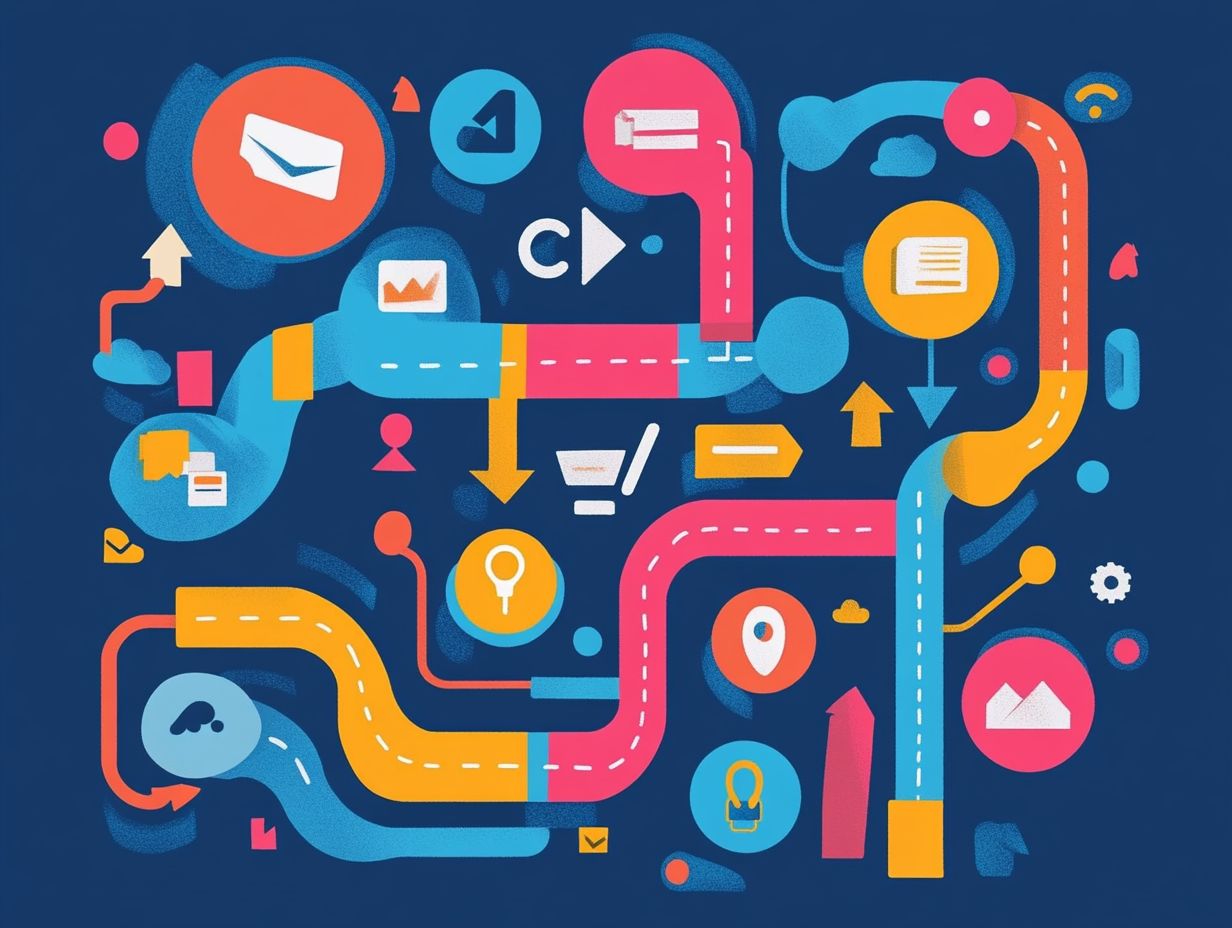
The customer journey in lead generation unfolds through multiple stages. Each stage is vital for guiding potential leads through the sales funnel.
You should implement effective ways to connect with your audience that are tailored to the unique needs of your distinct audience segments.
1. Awareness
The awareness stage marks the beginning of your customer journey. Here, potential leads first encounter your brand, often through the artful use of content marketing or social media initiatives.
In this pivotal phase, you must implement various strategies to capture attention effectively. Craft content that speaks directly to your audience’s interests. Engaging and relatable content ensures your messaging is not only heard but also remembered.
Utilizing social media platforms for targeted advertising, leveraging SEO techniques, and creating shareable content can significantly boost your visibility. Build a community around your brand with interactive engagement—like polls, Q&A sessions, and contests—to stimulate interest and foster genuine connections.
This approach ultimately paves the way for deeper relationships as potential leads continue their journey with you.
2. Interest
Once potential leads become aware of your product or service, they enter the interest stage. Here, they actively seek more information, often engaging with content like articles, blogs, and videos.
Consider leveraging video marketing to captivate your audience with dynamic visuals and compelling storytelling. Additionally, interactive content, such as quizzes or polls, invites users to participate, making them feel invested in your brand.
These strategies keep potential customers intrigued and address specific pain points by delivering tailored messages and solutions. By aligning with customer expectations and preferences, you can create a more relatable and satisfying journey. This ultimately guides leads toward a well-informed purchasing decision.
Let's Set Up Your Lead Generation Strategy
Fill out the form below, and our team will get in touch with you to create a tailored solution for your business.
3. Consideration
During the consideration stage, potential leads evaluate their options and compare various solutions. Present compelling reasons for why they should choose your offerings.
To sway these prospects, utilize a customer data platform to analyze engagement metrics. Understanding how leads interact with different touchpoints allows you to craft tailored messaging that resonates with their unique needs.
Incorporate strategies like personalized email campaigns, targeted advertisements, and informative content to enhance your lead conversion efforts. Address common pain points and showcase success stories to solidify the case for your solution, guiding prospects toward a favorable decision.
4. Decision
In the decision stage, potential leads are teetering on the edge of conversion. It’s essential to communicate your value propositions clearly and address any lingering pain points.
To effectively engage with these leads, grasp their specific concerns and hesitations. Tackling these can significantly sway their final decision. Employ personalized communication strategies, like targeted emails or tailored content, to weave a compelling narrative that resonates with their needs.
Create a sense of urgency through limited-time offers or by showcasing glowing customer testimonials. This can propel leads to take that all-important final step toward conversion.
By fostering an environment where concerns are acknowledged and addressed swiftly, you build trust. This makes it easier for potential clients to feel confident in their choice.
Navigating the customer journey effectively demands that you employ best practices and engagement strategies designed to facilitate a seamless transition through personalized experiences for potential leads at every stage. This approach maximizes engagement and brand loyalty while elevating customer satisfaction and understanding customer expectations.
5. Retention and Referral
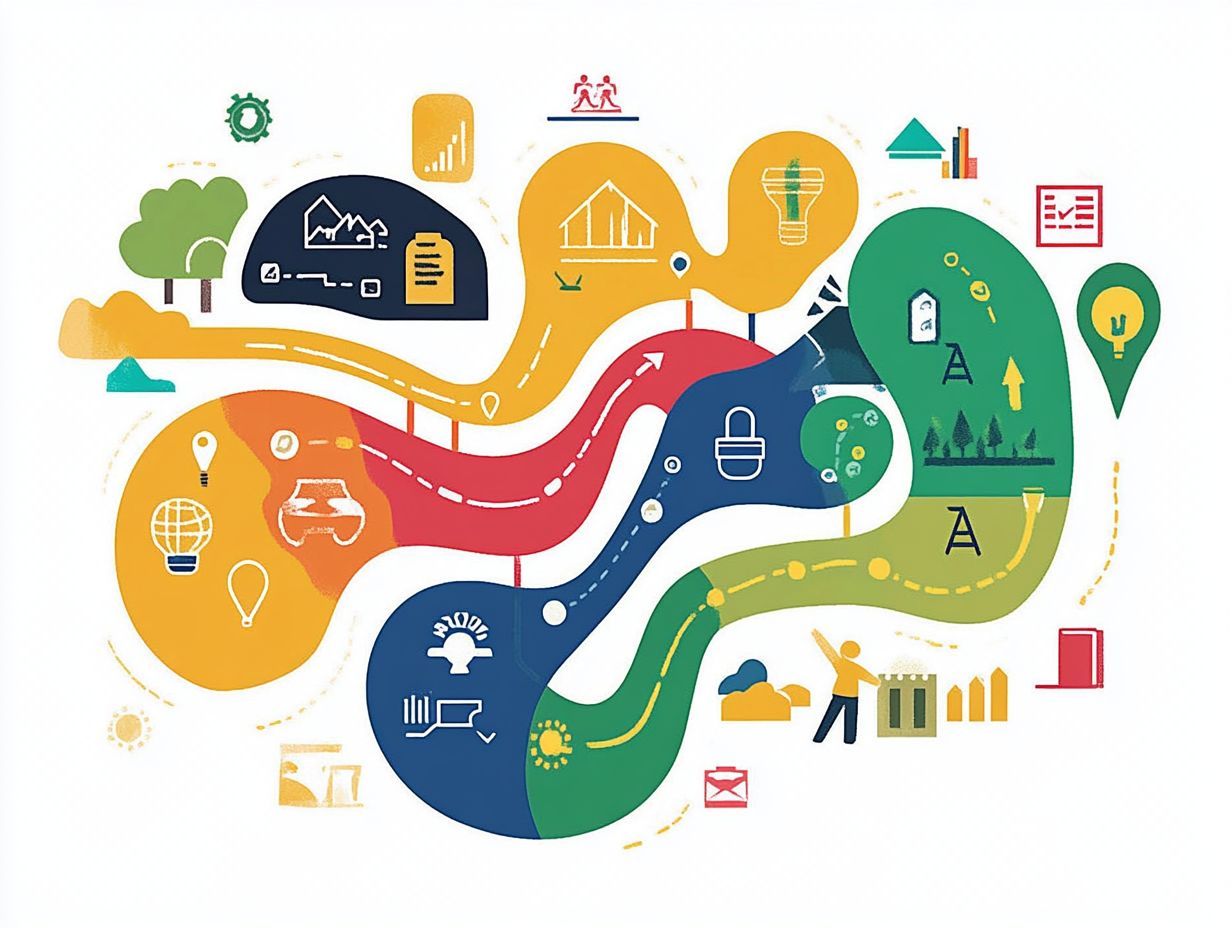
Retention and referral mark the final stage of your customer journey. Here, satisfied customers maintain their relationship with your brand and enthusiastically advocate for it to others.
Implement effective strategies that nurture this loyalty and transform your customers into passionate brand ambassadors. Measure customer satisfaction and evaluate engagement metrics to uncover valuable insights into your audience’s preferences and sentiments. Understanding these factors enables you to refine your approaches, ensuring that you meet specific needs and expectations.
Establish regular feedback loops and deliver personalized experiences to deepen emotional connections. Encourage your existing customers to share their positive experiences with friends and family. This, in turn, amplifies their loyalty and enhances your brand’s reputation in an increasingly competitive marketplace.
Effective Strategies for Each Stage
For each stage of your customer journey, implement effective engagement strategies through various channels, such as:
- Content: Including AI and machine learning marketing, video marketing, and search marketing.
- Email marketing: Utilize multi-touch attribution.
These strategies capture attention and nurture leads as they transition through awareness, consideration, and decision-making stages.
For example, in the awareness stage, leverage social media platforms to share informative blogs and engaging visuals to draw in potential customers. As they advance to the consideration phase, targeted email campaigns that provide detailed product comparisons or testimonials become essential.
Let's Set Up Your Lead Generation Strategy
Fill out the form below, and our team will get in touch with you to create a tailored solution for your business.
When they reach the decision stage in the sales funnel, personalized outreach through retargeting ads or exclusive offers can effectively encourage conversions. Every marketing channel plays a crucial role in ensuring a seamless and engaging experience throughout the customer journey.
Frequently Asked Questions
What is the Customer Journey in Lead Generation?
The customer journey in lead generation is the process potential customers follow from first contact to becoming paying customers. It involves optimizing the marketing tech stack, ensuring a positive customer experience for both B2B and B2C, employing a customer data management system for audience segments, and enhancing lead conversion.
What are the stages of the Customer Journey in Lead Generation?
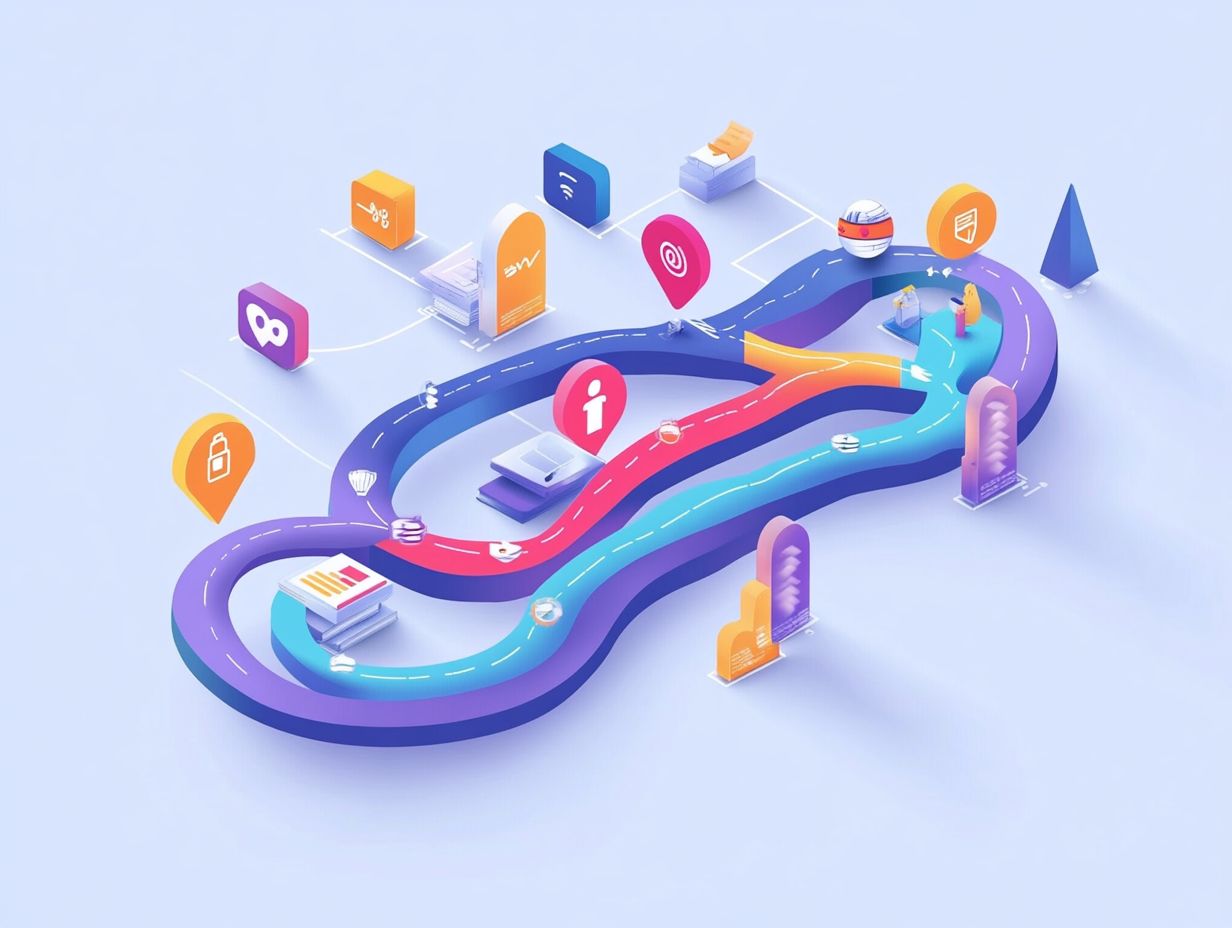
The stages of the customer journey in lead generation typically include:
- Awareness
- Interest
- Consideration
- Decision
- Action
These stages represent the different points at which a potential customer interacts with a business and moves closer to making a purchase.
How can businesses improve the Customer Journey in Lead Generation?
Businesses can improve the customer journey in lead generation by understanding their target audience and customer personas, creating a seamless and personalized experience, and providing helpful and relevant information at each stage of the journey.
What role does content play in the Customer Journey in Lead Generation?
Content plays a crucial role in the customer journey in lead generation as it helps attract, engage, and convert potential customers. Valuable and relevant content can help businesses establish credibility and build trust with their audience.
Why is it important to track the Customer Journey in Lead Generation?
Understanding the customer journey is crucial for successful lead generation! It allows businesses to spot gaps in their marketing approach and find areas for improvement.
It also helps measure the effectiveness of different touchpoints. Knowing which factors influence lead conversion can make a significant difference in turning prospects into customers.
How can businesses measure the success of their Customer Journey in Lead Generation using Shapley values?
Businesses can gauge their success by tracking important metrics such as conversion rates, customer acquisition costs, and customer lifetime value.
These powerful metrics reveal valuable insights that can transform your lead generation strategy!



